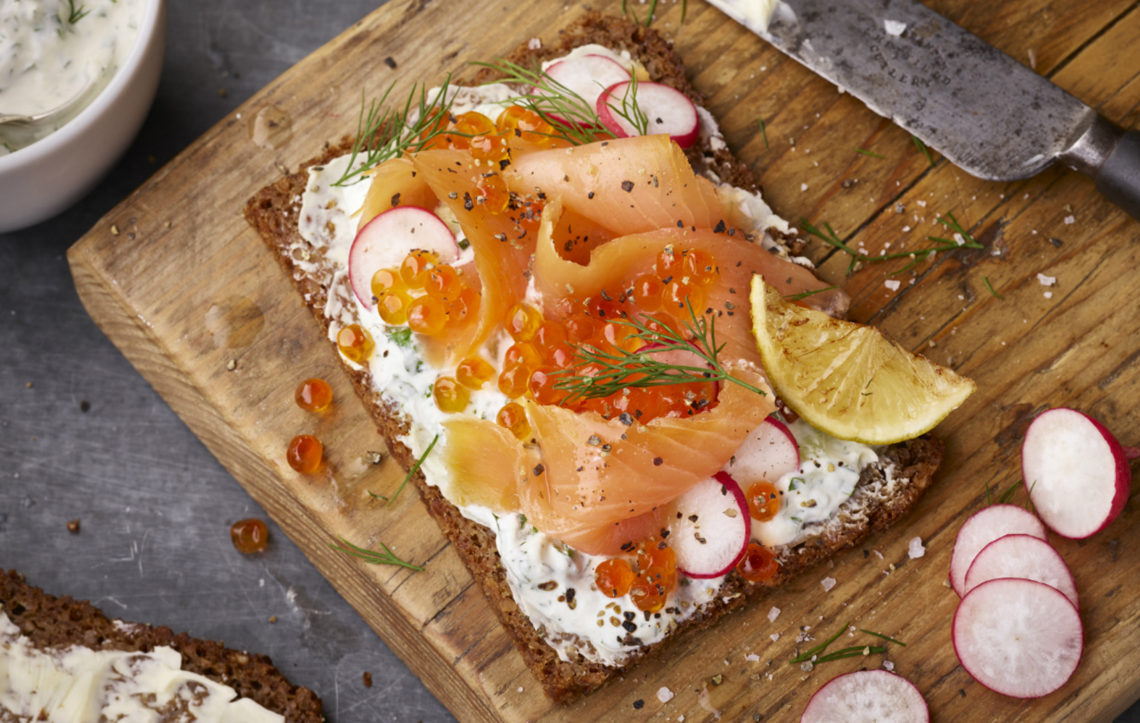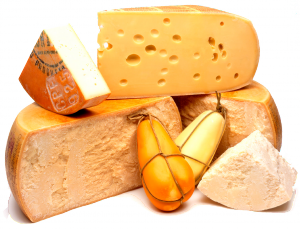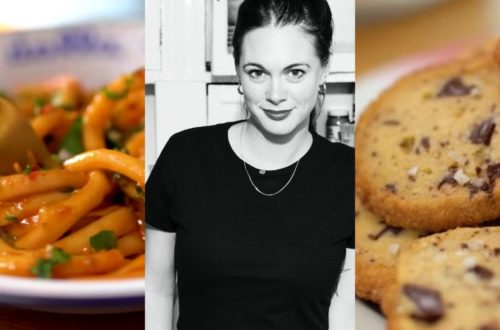
The Nordic Diet, Explained?
The U.S. News and World Report ranks many things each year, including diets. They evaluate each entry for short-term weight loss, long term weight-loss, general health benefits, and follow-ability. In 2021, many familiar favorites made the list: Mediterranean, Flexitarian, Weight Watchers. But coming in at number nine was one with less American household recognition: Nordic.
What is the Nordic diet, exactly? “It’s a healthy, whole-food, plant-centric diet that focuses on consuming more vegetables and fruit, whole grains instead of refined grains, and organic, local, and wild as often as possible,” holistic nutritionist Maria Marlowe tells Vogue. “The Nordic diet is similar to paleo in its focus on whole, real foods and high-quality animal products, but places a larger emphasis on plant-foods and wild seafood than meat.”
Think river-caught salmon instead of farmed; foraged berries instead of cultivated; and pasture-raised eggs (in moderation). Why? Wild foods are higher in nutrients—and, well, are more delicious. “Taste-wise, choosing wild and local foods will typically be more flavorful as they are presumably fresher or picked at the peak of ripeness when both nutrition and flavor of produce is at its highest. What’s more, wild berries—a staple in the Nordic diet—are often smaller and more concentrated in both flavor and nutrition than the large, water-dense berries you find at the grocer,” says Marlowe. (A 2010 Department of Agriculture analysis found that wild blueberries had double the antioxidants of farm-raised blueberries.) Other staples of the Nordic Diet include oats, root vegetables, legumes, skyr yogurt, and rapeseed oil, as well as fatty fish like salmon and mackerel.
The health benefits are plentiful: several studies suggest that it lowers blood pressure, and improves heart health. And while it never needs to be the goal, the Nordic Diet supports long-term rather than short-term weight loss. Simply put: it’s a lifestyle, rather than a temporary endeavor.
The Nordic diet isn’t exactly a new phenomenon. People in Denmark, Iceland, Norway, Finland, and Sweden have explored eating this way for, well, centuries. But the concept has recently been both publicized and formalized. In the 2010s, Noma in Copenhagen won the title of World’s Best Restaurant four times (and when they didn’t win, they came in second). It caused Nordic food to find a foothold worldwide—not just in the form of five-star restaurants, but in healthy fast-casual spots too: Danish chain Joe and the Juice, for example, began to rapidly expand in the United States in 2016. That same year, Noma co-founder Claus Meyer opened the Great Northern Food Hall in New York’s Grand Central Station, where pavilions served up herring-dressed Caesar salads and open-faced shrimp sandwiches on rye. Then came the buzzy books that made the Nordic diet available to home cooks: In 2015, Phaidon published The Nordic Cookbook by Magnus Nilsson, which was rumored to be on Prince Harry and Meghan Markle’s secret wedding registry. Then, in 2017, came the popular The Nordic Way.
All the while, researchers from the University of Copenhagen collaborated with Noma to officially outline, and share, the Nordic diet’s central components.
Come the new decade, Nordic gastronomy was firmly cemented as a wellness cuisine. When Williamsburg’s buzzy Bathhouse opened in November 2019, it did so with a Nordic-Japanese inspired menu. This spring, Noma co-founder and celebrity chef Mads Refslund will lead a wellness retreat at Water Mill’s Shou Sugi Ban House on Earth Day.
For his menu, Refslund says he plans to hone in on hyper-seasonal, local, and wild ingredients grown on Long Island—asparagus, pattypan squash, kohlrabi, black currant leaves, fiddlehead ferns, and pickled green strawberries are just some of the ingredients found. He also has his culinary team foraging for young spruce tips, cattail shoots and stalks, and birch tree sap on Shou Sugi Ban House’s grounds. Some sample dishes they’ll serve up? Chickpea and hazelnut spread with toasted rye bread and bean sprouts, Boston mackerel with grilled heart of romaine, buttermilk and salted egg yolks, and grilled salmon belly with ginger and flowers from their garden. (He, too, likes to intertwine his Nordic menu with Asian influences.)
Refslund will also be teaching cooking classes and foraging workshops, so guests can learn how to adapt a Nordic diet into their own lives.
He also points that the Nordic Diet goes beyond personal wellness: “A Nordic diet is predominantly plant-based so it’s easier on the environment because it requires fewer natural resources,” he explains. “We grow most of our ingredients, eat less processed foods and don’t eat as much beef as other cultures and instead incorporate freshwater fish, like salmon, mackerel and shellfish, lean cuts of pork or veal, and poultry as healthy proteins.”
That sustainability focus, perhaps, is the diet’s staying power. While so many trendy culinary habits fall out of favor—cabbage soup or South Beach diets, for example—eating the Nordic way is not only for your benefit, but everyone’s. “I think consumers are leaning more towards fresh, honest ingredients while trying to eat more locally-sourced foods for freshness as they are becoming more aware about the environmental impact and the idea of eating closer to nature,” says Refslund.
However, the Nordic diet’s focus on local, wild, and low-impact ingredients can also be its difficulty. It’s a bit hard to forage for berries when you live in an urban apartment. Nor does every supermarket carry wild meats. (Although you can directly order from ranches on eatwild.com.) “The Nordic diet emphasizes home cooking and local sourcing, which may not be practical or easy for many people,” admits Marlowe. So here’s what she suggests: “I say take what principles you can from the Nordic diet—for example eating more whole veggies and organic berries, eliminating refined carbohydrates and processed foods, and choosing the highest quality sources of your animal proteins.” She, for one, incorporates the diet into her life by adding Nordic berry powders to her morning breakfast bowls.
Or you can just copy what’s in Refslund’s fridge: “I always have rye bread on-hand as well as a variety of whole grains (amaranth, chia seeds, oats); fresh fruits, leafy greens and root vegetables; eggs, nuts and seeds; and freshwater fish, as well as yogurt and cheeses.”
Courtesy of Vogue Magazine.


